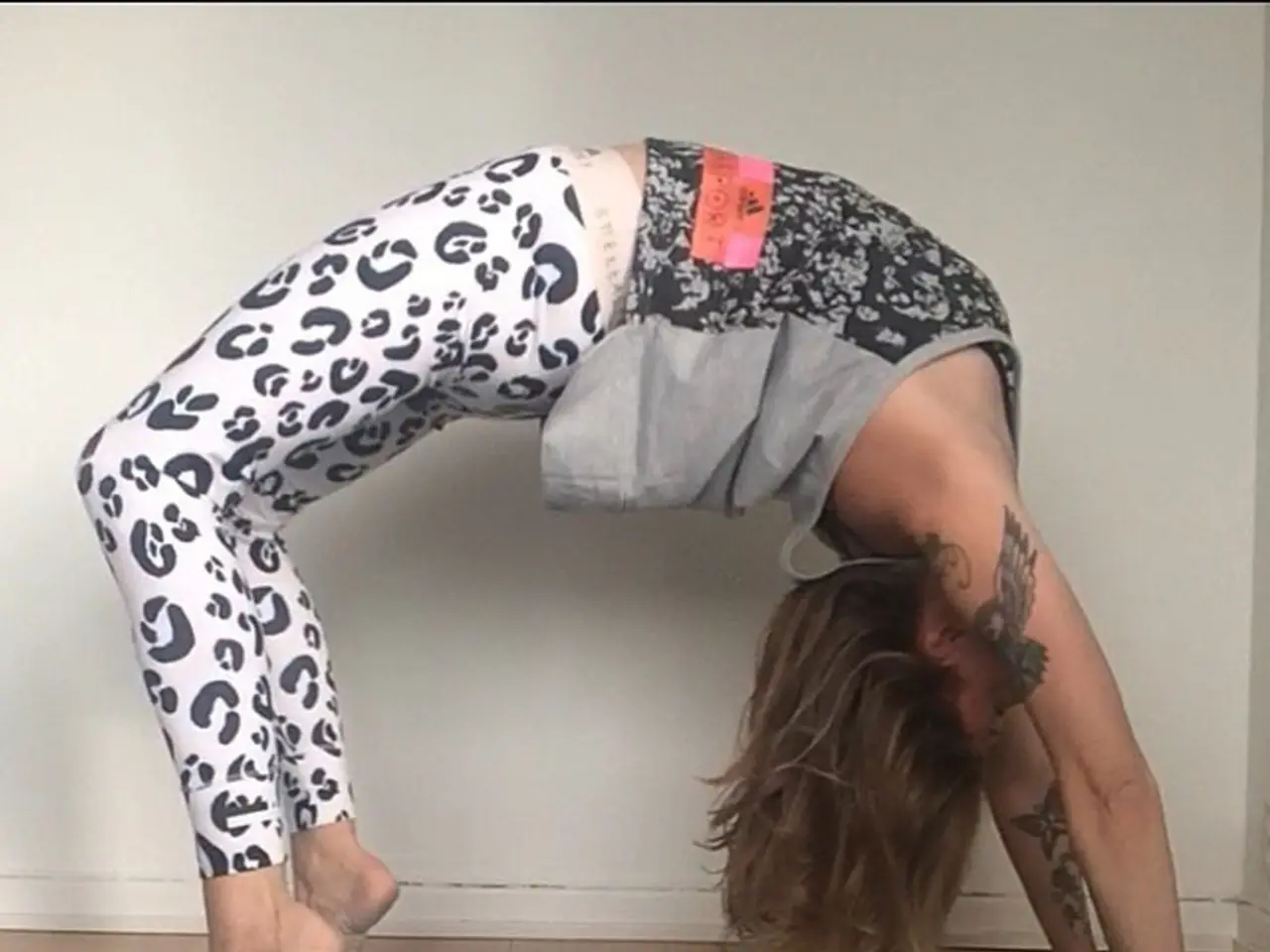Four yoga positions to help alleviate stress-induced sleep problems
A recent review of previous research has found that yoga can be beneficial for improving sleep among women with insomnia, particularly those going through menopause. Furthermore, a 2019 research review discovered that mind-body therapies, including yoga, significantly reduced the severity of insomnia in various studies.
Yoga can be a powerful tool for managing stress-related insomnia, as it focuses on conscious breathing, flexibility, and strength. By incorporating a calming yoga routine into your nightly routine, you can lower anxiety, calm a racing mind, and enhance your body’s readiness for deep, restorative sleep.
Effective Yoga Poses for Stress-Related Insomnia
Here is a list of gentle and restorative yoga poses that can help alleviate stress and prepare the body and mind for a good night's sleep:
- Supta Baddha Konasana (Reclining Bound Angle Pose): This pose helps deep relaxation by opening the hips and calming the nervous system.
- Balasana (Child’s Pose): This pose releases tension in the lower back, hips, and shoulders, calms the mind, lowers heart rate, and prepares the body for sleep.
- Viparita Karani (Legs-Up-The-Wall Pose): This pose improves circulation and reduces stress.
- Shavasana (Corpse Pose): This pose promotes total physical and mental stillness, reduces cortisol, and supports deep rest.
- Uttanasana (Standing Forward Bend): This gentle forward fold helps calm the nervous system and relieve tension.
- Cat-Cow Pose: This gentle spinal movement releases tension and promotes relaxation.
- Bridge Pose: This pose opens the chest and relieves tension to calm the body.
- Happy Baby Pose: This pose gently releases lower back tension and soothes the nervous system.
- Seated Twist: This pose releases spinal tension and aids digestion.
- Butterfly Pose: This pose opens hips and promotes relaxation.
- Head-to-Knee Pose: This pose provides a gentle stretch aiding relaxation.
Including gentle breathwork with these poses further activates the parasympathetic nervous system (rest and digest mode), countering stress responses and reducing the stress hormone cortisol to improve sleep quality.
Practicing Yoga for Better Sleep
To get started with yoga for better sleep, choose a regular time, create a calm environment, wear loose nightwear, and start slowly with short sessions. It's important to note that high-intensity types of yoga, such as hot yoga or Vinyasa, can increase the heart rate, which may not be helpful before bed. Instead, styles such as Yin yoga or gentle Hatha yoga may be the most suitable.
Perform poses like Child's Pose (Balasana), Butterfly Pose, and Corpse Pose (Shavasana) to help relax and prepare your body for sleep. In Child's Pose, you can choose to rest your arms at the sides or extend them in front with palms down. To finish Corpse Pose, flex your hands and feet, roll onto one side, and sit up.
The Legs Up The Wall (Viparita Karani) pose is another effective pose for relaxation before bedtime. In the Reclined Butterfly Pose (Supta Baddha Konasana), lie on your back, bend your knees, draw your feet toward your pelvis, and interlock your fingers on your stomach.
Research indicates that practicing even 10 minutes of these gentle yoga poses before bed can help lower anxiety, calm a racing mind, and increase total sleep time by nearly two hours, help people fall asleep faster, and reduce tossing and turning.
In conclusion, yoga can be an effective natural strategy for managing stress-related insomnia. By incorporating a calming yoga routine into your nightly routine, you can improve your sleep quality and wake up feeling refreshed and rejuvenated.
- Yoga, particularly gentle and restorative poses such as Reclining Bound Angle Pose (Supta Baddha Konasana), Child’s Pose (Balasana), and Corpse Pose (Shavasana), can help alleviate stress and improve sleep quality, making it a beneficial tool for managing stress-related insomnia.
- Practicing just 10 minutes of these gentle yoga poses before bed can help lower anxiety, calm a racing mind, and increase total sleep time by nearly two hours, as suggested by research, thereby contributing to health-and-wellness and mental-health.
- For best results, it's essential to create a calm environment, wear loose nightwear, and perform poses slowly, with a focus on conscious breathing, flexibility, and strength, as suggested in the practice of yoga for better sleep.
- Science has shown that mind-body therapies, including Yoga, significantly reduced the severity of insomnia in various studies, as explained in the 2019 research review, making it a valuable resource in the fitness-and-exercise and health-and-wellness arena, particularly for managing stress-related insomnia.




